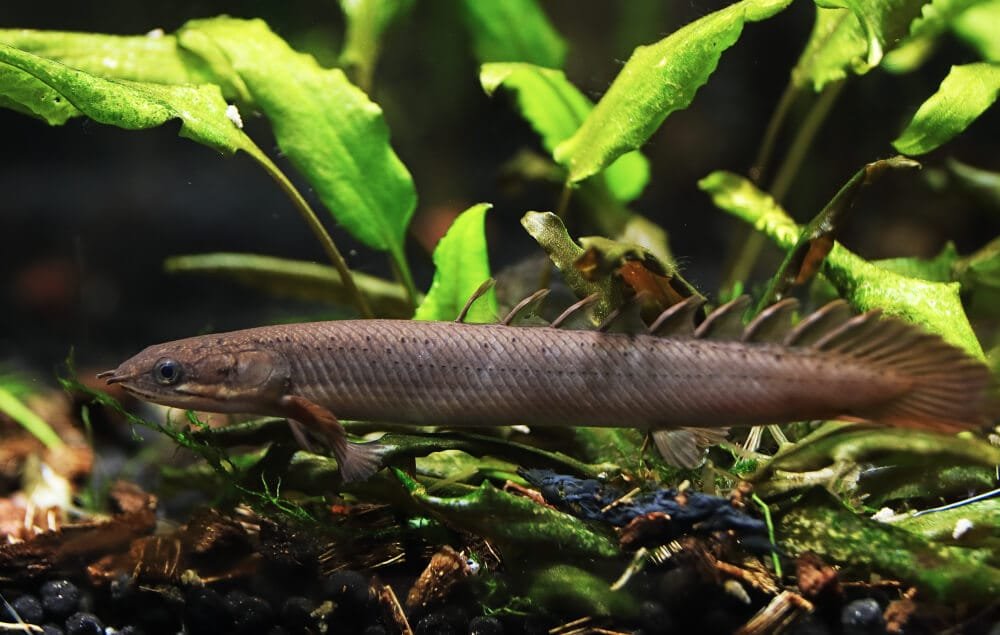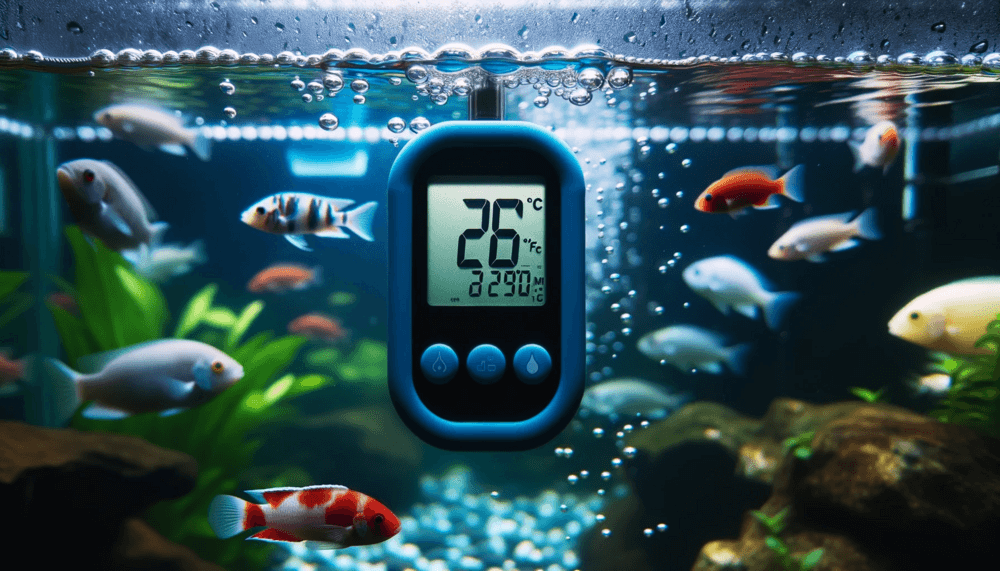So, you’ve decided to add some new finned friends to your well-established fish tank. How exciting! But before you go ahead and plop those new fish into the tank, there are a few important steps to consider. In this article, we’ll explore the best methods for introducing new fish to an already populated tank, ensuring a smooth transition and a harmonious aquatic community. Whether you’re a seasoned fish enthusiast or just starting out, this guide will provide you with all the tips and tricks you need to successfully integrate new fish into your tank without causing any stress or harm. Let’s get started!
Choosing Compatible Fish
When adding new fish to an established tank, it is crucial to research species compatibility. Not all fish get along well, and some may even be territorial or aggressive towards other species. Take the time to learn about the social behavior and temperament of different fish species before making any additions to your tank.
Consider the size and activity level of the fish you plan to introduce. It is important to choose fish that are similar in size to prevent any potential aggression or predation. Active fish may stress out or intimidate more docile species, so it’s important to strike a balance in terms of activity levels as well.
Avoiding aggressive or territorial species is essential for maintaining a peaceful tank environment. Certain fish, such as cichlids or some types of bettas, are known for their territorial nature and may not be suitable for a community tank. Instead, opt for peaceful and community-oriented fish that are known to coexist well with others.
Maintaining a balanced population is also crucial for the health and well-being of your fish. Overcrowding can lead to stress, aggression, and poor water quality. Consider the space requirements of each fish species and ensure that you create an environment where all the inhabitants can thrive.
Preparing the Tank
Before introducing new fish, it is important to ensure that the tank is suitable for their arrival. Testing water parameters is essential to provide a suitable environment for your fish. Check the levels of ammonia, nitrite, nitrate, pH, and temperature and make any necessary adjustments to create an optimal habitat.
To prevent the introduction of diseases or parasites, it is recommended to quarantine new fish before adding them to your established tank. This will allow you to observe and treat any potential health issues without risking the health of your other fish.
Acclimating new fish to the tank’s temperature is crucial to minimize stress. Fish are sensitive to sudden changes in temperature, so it is best to slowly acclimate them by floating the bag or container they came in for about 15-20 minutes in the tank water. This allows their body temperature to adjust gradually, reducing the risk of shock.
To provide a sense of security for the new arrivals, ensure that there are sufficient hiding places in the tank. This can be achieved by adding plants, rocks, or other decorations that create sheltered areas within the tank. Providing hiding spots helps reduce stress and allows the new fish to adjust to their new environment more easily.
Introducing New Fish
Choosing the right time to introduce new fish is crucial for their successful integration into the tank. Avoid adding new fish during periods of high stress or disruption, such as during water changes or when any major tank maintenance is being conducted. A calm and stable environment will help minimize stress and facilitate a smoother transition for the new arrivals.
One popular method for acclimating new fish is the drip method. This involves slowly dripping water from the tank into the bag or container holding the new fish. The gradual change in water parameters helps the fish acclimate to the tank’s conditions. This process usually takes around 30 minutes to an hour, depending on the size and temperament of the fish.
When ready to introduce the new fish to the tank, it is important to handle them with care. Using a net or bag designed for fish transportation, gently transfer them from the quarantine tank to the established tank. Avoid introducing water from the quarantine tank to prevent any potential contamination.
Once the fish are in the bag or net, gently release them into the tank. Be patient and avoid any sudden movements that may startle or stress the fish. Allow them to swim out at their own pace and find their place in the tank. This gradual approach helps reduce stress and promotes a smooth introduction.
Monitoring and Adjusting
After introducing new fish, it is crucial to closely monitor their behavior and the tank’s water parameters. Watch for any signs of stress or aggression among the fish. Aggressive behavior, such as chasing, nipping, or territorial disputes, may require intervention to maintain a peaceful environment.
Continuously monitoring water parameters is important for the overall health of the tank. Regularly test for ammonia, nitrite, nitrate, pH, and temperature to ensure optimal conditions. Any significant deviations should be addressed promptly to prevent stress and illness among the fish.
If adjustments are necessary, it is crucial to make them gradually. Rapid changes in water parameters can be stressful and even fatal for fish. Instead, make gradual adjustments over several days or weeks, allowing the fish to acclimate to the changes without experiencing any sudden shocks.
Maintaining a Healthy Tank
To maintain a healthy tank, it is essential to perform regular water testing and maintenance. Test the water parameters regularly to ensure the optimal conditions for your fish. Depending on the needs of your specific tank, perform water changes, clean the filtration system, and remove any excess debris.
Feeding your fish a balanced diet is also crucial for their health and well-being. Research the dietary requirements of your fish species and provide them with appropriate nutrition. Overfeeding can lead to water pollution and various health issues. Follow feeding guidelines and observe the fish’s behavior to ensure they are getting enough food without excess.
Keeping the tank clean is vital for the overall health and longevity of your fish. Regularly clean the tank, including the walls, gravel or substrate, and decorations. Use an appropriate aquarium cleaning tool and avoid using any harmful chemicals or soaps that may be harmful to the fish. A clean tank provides a healthier environment for your fish to thrive.
Observing the behavior of your fish is an important part of maintaining a healthy tank. Monitor their swimming patterns, eating habits, and social interactions. Any significant changes in behavior could indicate potential health issues or stress. Promptly address any concerns and consider consulting an aquatic veterinarian if needed.
Dealing with Potential Issues
Bullying or aggression among fish can disrupt the harmony of the tank. If you observe aggressive behavior, it is important to address it promptly to maintain a peaceful environment. Adding additional hiding places, rearranging tank decorations, or even removing the aggressive fish may be necessary to restore balance.
If any fish show signs of disease or illness, prompt treatment is crucial to prevent the spread of infection. Research common fish diseases and their symptoms, and consult a veterinarian or aquatic specialist if needed. Quarantine the affected fish and treat them accordingly to minimize the risk to other tank inhabitants.
Managing overpopulation is also essential for maintaining a healthy tank. If the population becomes too large, it can lead to increased stress, competition for resources, and poorer water quality. Consider rehoming or finding a suitable alternative for excess fish to ensure a balanced and sustainable population.
Removing problematic or aggressive fish may be necessary to maintain harmony in the tank. If all attempts to address aggression or disruptive behavior fail, it may be best to remove the problematic individual and provide a more suitable environment for the remaining fish. Carefully consider the compatibility and behavior of any potential replacements to prevent similar issues in the future.
Conclusion
Introducing new fish to an established tank can be an exciting and rewarding experience. By researching species compatibility, preparing the tank, introducing new fish with care, and monitoring and adjusting as needed, you can create a harmonious and thriving aquarium. Regular maintenance, observation, and addressing potential issues promptly will ensure the health and well-being of your fish for years to come. Happy fishkeeping!




